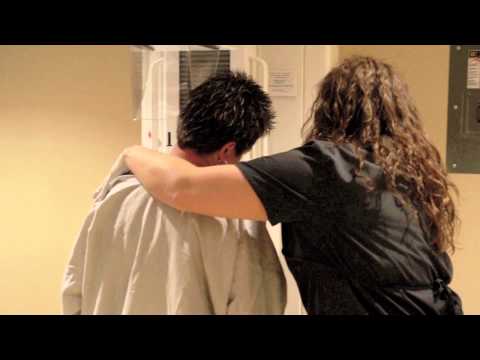Mammographer Job: Description & Salary

Mammographer Job Description Template
Mammographer Job Description A mammographer is a medical professional who specializes in using imaging technology to diagnose and detect breast diseases, including breast cancer. They perform mammograms, which are x-ray images of the breast, and assist radiologists in interpreting and analyzing the results. Mammographers work closely with patients, explaining the procedure, positioning them correctly, and ensuring their comfort and safety during the examination. They may need to adjust imaging equipment and use specialized techniques to obtain clear and accurate images. Mammographers also maintain detailed records of patient information, including medical history and examination results. One important skill for a mammographer is attention to detail. They must carefully review images to identify any abnormalities or signs of disease. They need to have a strong understanding of anatomy and physiology to accurately interpret the images and provide accurate reports to the radiologists. Additionally, they must have excellent communication skills to effectively communicate with patients and medical professionals, ensuring that they understand the procedure and any necessary follow-up steps. Another important quality for a mammographer is empathy. Breast examinations can be a sensitive and emotional experience for patients, particularly if they are concerned about their health or have previous experiences with breast cancer. Mammographers should approach their role with compassion, providing emotional support and reassurance to patients throughout the process. In summary, a mammographer plays a critical role in the early detection and diagnosis of breast diseases. Their attention to detail and empathy are vital in providing accurate imaging results and supporting patients during a potentially challenging time.Mammographer Responsibilities
Mammographer Requirements
How Much Does A Mammographer Make?
Mammographer Salary
| Experience Level | Salary Range |
|---|---|
| Entry Level | $50,000 – $60,000 |
| Mid-Career | $60,000 – $70,000 |
| Experienced | $70,000 – $80,000 |
| Senior | $80,000 – $90,000 |
A mammographer is a specialized medical professional who operates mammography equipment to produce diagnostic images of the breast. They play a crucial role in the early detection and diagnosis of breast cancer. Mammographers’ salaries vary based on their level of experience. Entry-level mammographers can expect to earn between $50,000 and $60,000 per year, while senior mammographers can earn between $80,000 and $90,000 per year. Mid-career and experienced mammographers fall within the salary range of $60,000 to $80,000 per year. These figures may vary depending on factors such as location and additional certifications or specializations.
Mammographer Salaries by Country
Top Paying Countries for Mammographer
| Country | Average Salary (USD) |
|---|---|
| United States | 85,000 |
| Australia | 80,000 |
| Switzerland | 75,000 |
| Canada | 70,000 |
| Netherlands | 68,000 |
Mammographers are specialized healthcare professionals who perform mammography, a type of medical imaging used to screen and diagnose breast diseases. The table above displays the top paying countries for mammographers based on their average salaries. The United States offers the highest average salary of $85,000, followed by Australia with $80,000. Switzerland, Canada, and the Netherlands also provide competitive salaries for this occupation, ranging from $68,000 to $75,000. These countries recognize the importance of mammography in early detection and prevention of breast cancer, hence offering attractive compensation to attract and retain skilled professionals in this field.
A video on the topic Mammographer
Video Source : Riverton HospitalInterview Questions for Mammographer
1. What is the role of a Mammographer?
A Mammographer is a specialized radiologic technologist who performs mammography, which is a specific type of medical imaging that uses low-dose X-rays to create detailed images of the breasts. They play a crucial role in the early detection and diagnosis of breast cancer.
2. What are the necessary skills and qualifications to become a Mammographer?
To become a Mammographer, one must complete an accredited radiologic technology program and obtain certification in mammography. Additionally, strong communication skills, attention to detail, and the ability to provide emotional support to patients are essential.
3. What are the typical duties of a Mammographer?
A Mammographer is responsible for positioning patients correctly for mammograms, operating mammography equipment, and capturing high-quality images of the breasts. They also assist radiologists in the interpretation of the images and may perform additional diagnostic procedures if necessary.
4. How do you ensure patient safety during a mammography procedure?
Ensuring patient safety is a top priority for a Mammographer. They follow strict radiation safety protocols, including using the lowest possible radiation dose, shielding the patient’s reproductive organs, and maintaining proper equipment maintenance and quality control.
5. Can you describe the process of a mammography procedure?
A mammography procedure involves the patient removing their clothing from the waist up and wearing a hospital gown. The Mammographer positions the patient’s breasts on the mammography machine and compresses them between two plates to obtain clear images. The process may cause mild discomfort but is generally quick and well-tolerated.
6. How do you handle anxious or nervous patients during a mammography procedure?
As a Mammographer, it is important to provide emotional support to anxious or nervous patients. They explain the procedure in detail, answer any questions or concerns, and ensure the patient feels comfortable and informed throughout the process.
7. What steps do you take to maintain patient confidentiality?
Maintaining patient confidentiality is a critical aspect of a Mammographer’s role. They adhere to HIPAA regulations and only discuss patient information with authorized individuals. They also ensure that patient records and images are stored securely and accessible only to authorized personnel.
8. How do you stay updated with the latest advancements in mammography technology?
To stay updated with the latest advancements in mammography technology, a Mammographer attends continuing education courses, conferences, and workshops. They also regularly review current literature and participate in online forums and discussions with other professionals in the field.
9. Can you describe a challenging situation you encountered as a Mammographer and how you handled it?
One challenging situation I encountered as a Mammographer was when a patient became very anxious and refused to undergo the mammography procedure. I calmly explained the importance of the exam, addressed her concerns, and offered emotional support. Eventually, she agreed to proceed, and I ensured her comfort throughout the process.
10. How do you prioritize and manage your workload as a Mammographer?
As a Mammographer, I prioritize my workload by carefully scheduling appointments and allowing sufficient time for each procedure. I also communicate effectively with other team members to ensure a smooth workflow. If unexpected issues arise, I remain flexible and adaptable to manage the workload effectively.






